Text


T’HY’LALEXIC: a lexegender related or connected to the vulcan word t’hy’la from star trek lore, meaning a deep, intimate bond or roughly translating to ‘friend/lover/brother’
TAGGING: @lexegender-archival @1000-worms @emailmeurheart (if u don’t mind :3)
🧼 ——— FLAG COINED BY ME
#— jacks smirking revenge#mogai#mogai flag#mogai term#flag coining#mogai coining#liom term#liom coining#xenogender#mogai gender#gender coining#gender flag#xenogender coining#lexegender#lexic gender#-lexic#t’hy’la#t’hy’lalexic#star trek gender#lexic system#wordgender#genderlexic
27 notes
·
View notes
Text
~♡ ENIGMALEXIC ♡~
Coined by: Me/Kityenok
A gender related to the word " Enigma ", or a gender that could be considered an enigma.
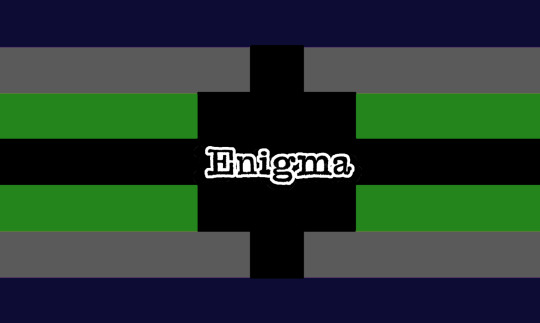
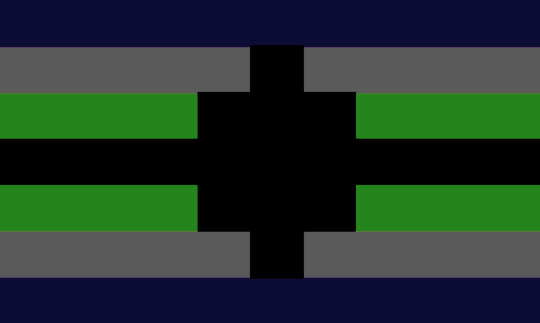
(1/29/23)
#enigmalexic#enigma#lexic#lexic gender#lexic system#lexic xenogender#xenogender#gender#nonbinary#kityenok genders
15 notes
·
View notes
Text

Canniballexic:
A gender related to the word "cannibal".
Coined by me.
#lexic gender#cannibal mogai#gender system#cannibalism#xenogender#goregender#xenogender coining#xeno coining#mogai coining#mogai term#term coining#flag coining#mogai flag#mogai#gender coining#liom#liom gender#mogai gender#mogai identity#coining post#pro xenogender#cannibalcore#gender flag#gender identity
32 notes
·
View notes
Text





Bimboperspesque, bimbolexic, bimboweirdo, bimbofreak, bimbosystem
Bimboperspesque: wanting the word bimbo to be deeply intertwined with how others perceive you.
Bimbolexic: a gender related to the word bimbo
Bimboweirdo: a gender related to being a weirdo and a bimbo. A weird bimbo.
Bimbofreak: a gender related to being a freak and a bimbo. A bimbo freak.
Bimbosystem: when your entire system is affected by being a bimbo.
#perspesque#lexic#weirdo#freak#system#mogai pride#mogai term#mogai pride flag#mogai flag#mogai coining#mogai gender#mogai#liom pride#liom community#liom coining#liom term#liomogai#liom#mogai community#term coining#flag coining#plural flag#genderlexic#plural mogai#plural liom#plural liomogai#pluralgang
13 notes
·
View notes
Text


Femboylexic Coining & Flag
Femboylexic- A lexic gender related to the word femboy. When the word femboy is your gender.
Name comes from the word ‘femboy’ and the -lexic gender suffix meaning a gender related to a word.
Flag colors were picked by me and and the pattern is from other -lexic flags I’ve seen.
Coined by Me GenderpunkGenderhoard
#⋆⭒˚。⋆♕ƬӇƖƧ ƓЄƝƊЄƦ ƖƧ ƖƝ ƬӇЄ MƲԼƬƖƔЄƦƧЄ♕✧˖°.#˚✧ ₊˚ʚ𝓖𝓮𝓷𝓭𝓮𝓻 𝓑𝓸𝓾𝓽𝓲𝓺𝓾𝓮ɞ ˚₊ ✧ ゚#gender#gender coining#mogai#mogai blog#mogai coining#mogai community#mogai flag#mogai friendly#mogai gender#mogai safe#mogai term#pro mogai#genderlexic#lexic gender#xeno coining#xenogender#system friendly#🐇𝔇𝔬𝔴𝔫 𝔗𝔥𝔢 ℜ𝔞𝔟𝔟𝔦𝔱𝔥𝔬𝔩𝔢…#𖧧⟡Pყɳ’ʂ Oρυʂ𓍯𓂃
24 notes
·
View notes
Text
Lexicplex
[PT: Lexicplex]
Lexicplex, a plurplex term that means that a -lexic identity/being -lexic effects the entire system (or subsystem, layer, etc). It doesn’t have to be in the same way, it just has to affect everyone.
Lexic(link)



[ID: none yet]

[Tagging] @radiomogai, @plurplex-archive-dot-net, @pluralitywords, and @pluralterms

#✨⚫️✨ : post#Lexicplex#Lexic#-Lexic#silent fellowship#plurplex#the silent fellowship#sys#plural system#system#system term#system coining#plural#plural term#plural coining#gif#flashing gif
15 notes
·
View notes
Text

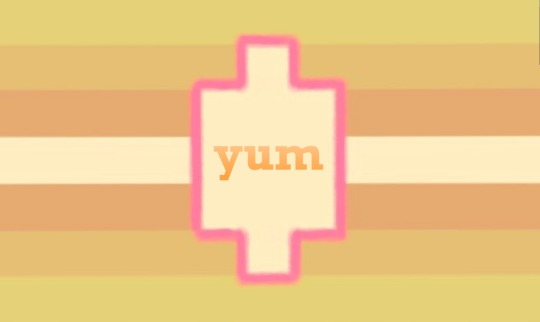
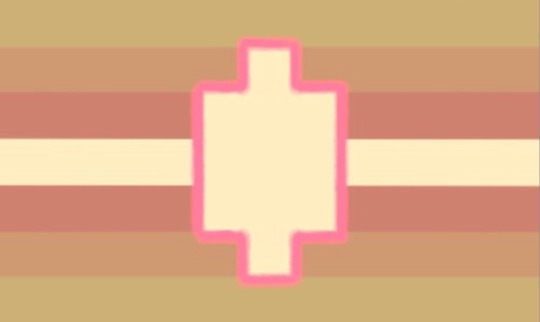
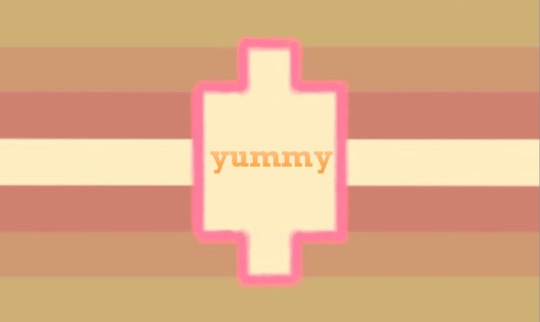
Yumlexic: a lexigender related to the word yum
Yummylexic: a lexigender related to the word yummy
Flags made using @/epikulupu’s lexegender flag template! Lexegender made by @/pupyzu


Yumbodiment: a gender under the genderbodiment umbrella that is the embodiment of the word yum and/or is the embodiment of being yum
Yummybodiment: a gender under the genderbodiment umbrella that is the embodiment of the word yummy and/or is the embodiment of yumminess
Flags made by using @/muutagenic’s genderbodiment flag template! Genderbodiment made by @/muutagenic


Yumstimmic: a gender related to the word yum being a vocal stim
The -stimmic suffix was made by @/pupzu
#pompom coins#🍯 coins#lexigender#lexic#lexic gender#lexegender#genderbodiment#genderbodiment system#mogai coining#xenogender coining#mogai flag#xenogender flag#gender coining#mogai gender#xenogender#pro xenogender#ids in alt#yumlexic#yummylexic#yumbodiment#yummybodiment#yumstimmic
15 notes
·
View notes
Text
Hey!! A quick question for fellow systems with synesthesia,
Does it effect each of you in a different way? Like, do you all get something different from it, and do some experience it in a lessened degree or higher degree than others??
We have synesthesia, but we've never thought about this, and I obviously can't remember or know what the others in our system experience. We were going to try and document it within our own system, and probably still will, but I'm curious about others as well!! Reblog or comment your responses please, preferably a reblog for further reach! 🩵
#anti endo#anti endogenic#traumagenic only#actually did#complex dissociative disorder#dissociative identity disorder#did system#did sys#didosdd#osddid#cdd#cdd system#synesthesia#color synesthesia#taste synesthesia#scent synesthesia#projective synesthesia#associative synesthesia#grapheme color synesthesia#lexical gustatory synesthesia
35 notes
·
View notes
Text
Last Line Tag Game
Hey, been a while. Was recently tagged by @sunset-a-story , @mrbexwrites , and @maskedemerald for this tag game; and I'm certain others before them.
Rules: post the last sentence you wrote in your WIP and tag as many of your followers as there are words in the sentence.
Been away from interacting on tumblr for a hot minute; broke a writing hiatus last week; gonna ride out my desire to interact and write while it lasts! I'ma do two 'lines' from the most recent version of 'Flesh Town' since that's what I'm working on:
Worry, concern used to mask criticism of a lifestyle they didn't approve of. Save for Brutus, far as I could read he was genuine with his care. "Found what you're looking for yet?" Brutus was already pouring a mug of the usual cheap wine I ordered. Bless Him.
soft tagging: @covenscribe @cee-grice @sam-glade @thatndginger @scribe-cas
During my break from writing I've picked up some coding with the desire to maybe churn out some small form video games, likely in one of my settings or inspired by my writing. Anyways; because it's punny here is the last line of code I wrote for Advent of Code:
const replaceLetters8 = replaceLetters7.map(el => el.replaceAll("nine", "9"));
The code still doesn't work 'correctly' but hey I've only been doing this for a month.
#writeblr#writers on tumblr#Flesh town#last line tag game#Oh and I'm somewhat back on lexical#not narratively but in the form that I'm putting effort towards actually fleshing out the ttrpg system#which I was pushed to do so by one of my players wanting “work on Lexical” for a Christmas present#Anyways thanks for keeping me in yours tags and asks even though I've been quiet#getting a ping from a mutual always brings joy to my day
10 notes
·
View notes
Text
Writing Notes: Semantic Change

Linguists have distinguished several kinds of semantic change. Four particularly important categories are given below (other types and examples include: euphemism, clich��, figurative language, and the various dimensions of "political correctness").
Lexeme - the smallest contrastive unit in a semantic system (run, cat, switch on); also called lexical item.
Extension or generalization. A lexeme widens its meaning. Numerous examples of this process have occurred in the religious field, where office, doctrine, novice, and many other terms have taken on a more general, secular range of meanings.
Narrowing or specialization. A lexeme becomes more specialized in meaning. Engine was formerly used in a general sense of ‘mechanical contrivance’ (especially of war and torture), but since the Industrial Revolution, it has come to mean ‘mechanical source of power’. Several of the terms of economics also show specialization.
Amelioration. A lexeme develops a positive sense of approval. Revolutionary, once associated in the capitalist mind with an undesirable overthrowing of the status quo, is now widely used by advertisers as a signal of desirable novelty. Lean no longer brings to mind emaciation but athleticism and good looks.
Pejoration or deterioration. A lexeme develops a negative sense of disapproval. Middle English villein neutrally described a serf, whereas Modern English villain is by no means neutral. Similarly, junta has acquired a sinister, dictatorial sense, and lewd (originally, ‘of the laity’) has developed a sense of sexual impropriety.
NOTES
Everyone knows that words can change their meaning.
Example: We do not need to have taken a course in semantics to hold a view about what has happened to "gay" since the 1960s.
Some strongly disapprove of the new meaning which this lexeme has developed; some welcome it; but all native speakers of English recognize that there has been a change, and are able to talk about it.
Semantic change is a fact of life.
And those who have had to study older works of literature, such as a Shakespeare play, will need no reminding of how much of the vocabulary has been affected by such changes.
Source ⚜ More References: Word Lists
#writing notes#linguistics#langblr#writeblr#dark academia#spilled ink#studyblr#words#literature#language#writing reference#writers on tumblr#writing prompt#poets on tumblr#poetry#creative writing#fiction#writing inspiration#semantics#solomon joseph solomon#writing resources
68 notes
·
View notes
Text

Satisqueer


Satisqueer (or problaqueer) is a queer posture that focuses mainly on receiving people rejected by the community, not only LGBTQIAPN+ or MOGAI, but many others, this includes the paraphilic community, subs(edtwt, sh etc) among others. Our idea is to question social constructions and discuss whether everything that is considered wrong by the majority is, in fact, wrong as they say. More satisfied people should analyze reality in a material and not moral way and, in this way, have their own conclusions about the world and its functioning, position themselves before the rules and expectations that have been imposed on us.
Satisqueer also uses a lot of empathy trying to understand how others feel and support them and offer support to improve, in relation to how bad or problematic it seems to be, we welcome many fragile people who are often excluded and left aside by their disorders and coping mechanisms.
This queer posture may or may not be involved in speeches, whatever the reason, they have no obligation to discuss with whoever they judge that the discussion is not worth it.

Pro:
Controversial identities (gaygirl, lesboy, hetero-gay).
Alterhuman, otherkin(foodkin, objectkin, kin em pessoas reais).
Paraphilias, parafilic disorders and fetishes (taboo or not).
Endo, transplural and created system.
ANY type of hetero and Cisdissidence (including mono mspec, multiorientação, cistrans, iso...).
Non-monogamy.
Relationships between lesbians and men or gays and women.
Aldernics and extreme body modifications.
Paraphilias, paraphylic disorders and fetishes (tabu or not).
Pro-contacts of CONSENSUALS parafilias.
Sh, suicide and alimentary/mental disorders as artistic performance (may include assisted suicide).
Mad pride and anti-assylum movement
Autonomy on your own body (including abortion).
Consensual cannibalism.
Self-diagnosis / self-identification and any type of systems.
Destigmatization of mechanisms of unhealthy copings such as the romanticization of traumas.
Toxic, obsessive, abusive consensual and/or mutual relationships.
Proship and pro fiction / anti censorship.
Furry and other harmless communities.
Communism and anarchism.
ACAB (1312).
Feminism.
Legalization of all drugs.
Blm and other movements of racialized people
Sex workers.
Xenogenders, stetigenders, lexics, allions, vior, perspeque...
Xenosexualities and parasexualities.
RCTA
Transpara (transid in general).
Transition to trace.
Transautistics use identification badge/transable use wheelchair/crutch (things that match their disability).
Identify with things for fun (even though they are harmful).
Ed/shtwt among other subs.
MIF (minors in fetichism).
Incest (consang or not).
Radshifters.
Mahou shoujo irl.
Radqueer/inclus.
Sexual education/ children know their own body.
Loli, shota, kodo and nanacon.
Ageplay, petplay, rapeplay etc
CNC
Autopara (autopedo, autozoo, etc)
Fictosexuality
Neutral:
MUDs
MAP (just if the minor is 14+).
Claim and resignification of insults and offensive terms.
Transition to transharmful
Symbol of the puzzle to represent autistic people.
anti:
zoo contact.
Necro contact.
pedo contact.
Contact of any paraphilia that is done in a non-consesual way.
CP/CSEM/CSAM.
LSDqueer, basedqueer, kandiqueer, xenosatanism and similar.
Anti-therian
Bullying and harassment.
Conservatives, rightists, especially Nazis, fascists and capitalists.
Transmed
Sysmed
Cis/heteronormatividade against LGBTQIAPN+ people (ex: invalidating a trans boy for dressing in a “feminine” way and wearing makeup)
Radfem, radgay, genitalists, transphobics, exorsexists, binarists...
Misogyny, misandria and femism (not feminism) and similars.
Religious intolerant

Identification emoji idea:
🫧🌈 /🗂🌈 /🌈🌪
CURIOSITY: where did the idea of the name Satisqueer and problaqueer come from?
“Satis” comes from Latin, and means “quite” - who chose this name was lilico - and "probla" its from "problematic", indicating that we include a lot of communities, regardless of how problematic or bad they are (no matter how ‘shat’ it is). We fight mainly against cis/heteronormativity, transmed, capitalists and moralistic people.
No one is better than anyone else and has no wrong way to express themselves, identify or deal with their problems, I believe we should claim this label with pride, embrace the unusual and inconvenient ways of dealing with things as part of our identity and struggle.
Creator of the term: meee :3 (with the help of @transidiotloli )



#Satisqueer#pro rq 🌈🍓#rad inclus#rad queer#rq 🌈🍓#rq 🍓🌈#rqc 🍓🌈#pro 🍓🌈#radqueer 🍓🌈#radquer inclus#radq interact#radq safe#satisqueer interact#satisqueer safe#inclusionist#inclus#queer community#queer pride#queer term#problematic#inclusion#mogai coining#mogai term#mogai community#contradictory labels#transid please interact#transid safe#pro transid#antis dni#anti anti
53 notes
·
View notes
Note
What is the sapir whorf hypothesis?
The Sapir-Whorf hypothesis is the idea that language dictates thought. In the strongest sense of this hypothesis, if you don’t have the vocabulary for a concept, that concept doesn’t exist to you.
This is pretty controversial in the field of linguistics. Many agree with the concept of linguistic relativity, or the idea that language can influence the way people interact with the world. For example, different languages have different systems of words for sorting colors. In English, green and blue are considered two different colors, while several languages, like Zulu and Xhosa, don’t distinguish between the two and instead have a single word that encompasses both hues (sometimes referred to as “grue” by English-speaking linguists). On the other hand, English speakers consider dark blue and light blue to be different shades of the same color, while Mongolian has two separate words for them. Some languages, like Pirahã, only lexically distinguish between light colors and dark colors.
In other words, if you gave people from different places a bunch of paint chips and told them to sort them all by color, you might find some interesting differences in the results. But just because they’re categorized differently doesn’t mean the colors necessarily look different to different speakers. Most English speakers with normal vision can still tell the difference between light blue and dark blue even if we don’t have distinct terms for them, just like a speaker of a language without blue/green distinction can discriminate between the color of the sky and the color of grass.
The idea that language determines your thoughts (linguistic determinism) also leads down a very slippery slope, often with racist connotations. (Linguistics as a field has quite a long history of racist ideology, unfortunately.) The most famous example of this is Whorf’s conclusion that the Hopi Native Americans have no concept of time because the Hopi language does not have grammatical tense. In reality, there are other structures in this language that Hopi speakers utilize in order to just as effectively convey the past, present, and future as languages that do so with grammatical tense. On the flip side, English does not have a grammatical gender noun class system like Spanish or French does, but no one is trying to argue that English speakers don’t have a concept of gender!
My linguistics professors in undergrad really emphasized how flawed this hypothesis is, despite how convincing it can sound on the surface, and it has stuck with me and my classmates ever since. A few years ago, I was hanging out with some friends from college, and the only friend in the group who didn’t take at least one ling class mentioned something about reading “a really cool article about how language affects the way you think!” I can still hear the collective groan of everyone else in the room when he said that, followed by all of us scrambling to explain the issues and nuances of that claim 😂
157 notes
·
View notes
Text
ON BASQUE AND ITS TIES WITH GEORGIAN, ARMENIAN, AND TAMAZIGHT.
American linguist Morris Swadesh (1909-1967) created a world map of current languages according to comparative linguistics, taking into account their common origin. The lexico-statistical or glottochronological Swadesh method is based on taking 215 words in two groups of 100; key words such as personal pronouns, low numerals, parts of the body, kinship names, some action verbs, some adverbs of time and place, objects of nature, very common actions, bodily actions and questions.
Swadesh claimed that in the basic vocabulary the rate of change is so regular in languages, that he had been able to create a system of measuring the elapsed time in which two languages were related in the past and that today are separated geographically.
According to Swadesh, that basic vocabulary of 100 or 215 words changes less than 20% per millennium in each language. These variations in vocabulary leave a common ground between two or more languages related to each other, which is measured chronologically, thus establishing the time distance between a language and its more modern relatives. If the number of words with the same root between two languages in these two groups of 100 is less than or equal to 5%, it is considered a similarity by chance (the figure does not respond to anything specific, the method has many random parts), and if it is greater it would be the result of some common past.
There is a formula to know the time elapsed between the period in which the contact occurred and the current moment, and the result with Basque was the following (with the rest of the languages with which Basque has been compared by this method the result is inferior and not significant):
list 215 list 100
Northwest Circassian Caucasian:
6.62% 7.52%
Northwest Avar Caucasian:
3.80% 5.37%
Georgian, South Caucasian:
4.73% 7.52%
Rift Tamazight (northern Morocco):
6% 9.67%
Southern Tamazight (southern Morocco)
7.38% 10.86%
Many of the similarities considered good are more than questionable, since the evolution of words and languages is not taken into account, some borrowings from other languages are considered good, etc.
Nor can we forget American linguist R.L. Trask, that compared Hungarian and Basque and found in 2 hours of searching 65 similar words that could only be the result of chance, but that lead to question many investigations: this exercise tested by other researchers with other unrelated languages has given the same surprising result. R.L. Trask said “I can't understand why some linguists get so excited when they find two dozen Basque words that look like two dozen other Berber or Sumerian words.”
Basque and the languages of the Caucasus
The Caucasus is located 4,000 kilometers from Garonne-Pyrénées-Ebro where the Basques live. In the Caucasus, about 50 different peoples coexist with almost 22 languages. The main difficulty in establishing the Basque-Caucasian relationship consists of this lack of unity.
Swadesh's lexico-statistical ratio of Circassian and Georgian to Basque is 7.52%, higher than any other language in the world. The supposed contact would have occurred in the Magdalenian, about 10,000 years ago. With the rest of the languages of the Caucasus, current Basque is similar in typology (verbs, the ergative, etc.) and in the etymology of some words, but its lexical-statistical relationship with all of them is less than 5%.
There are also parallels between Basque and Georgian in syntactic aspects, such as the use of the ergative (transitive-intransitive verbs, “Nor-Nork” forms) that do not occur in any other European language, the reflexive way of making sentences such as: “I have seen my head in the mirror” (nire burua ispiluan ikusi dut), and not: “I have seen myself in the mirror”, the use of base twenty to count, etc.
But many current or recent renowned linguists are skeptical about the relationship with the Caucasian languages. Basque linguist Koldo Mitxelena (1915-1987) said that: “In summary, there are some Basque-Caucasian lexical similarities that cannot be demonstrated to be possible, but on the other hand there are a large number whose extraordinary implausibility can be demonstrated (…). Even if Basque and the Caucasian languages go back to a common origin, the number of missing intermediate links must be so high that it is to be feared that, due to not knowing them, the ancient ties of kinship will not be established."
If there is a relationship, for both Koldo Mitxelena and Xabier Kintana, it has to go back to the fifth and sixth millennia or earlier.
Basque and Armenian
Armenian linguist and Basque philologist Vahan Sarkisian, creator of the Basque-Armenian Dictionary and a Grammar of the Basque Language in his language, is the main promoter of the "Basque-Armenian theory" and the one who has done the most work in recent years on ethnolinguistic kinship between both peoples.
This prestigious Armenian linguist affirms that "the best promoters of this theory were neither Basques nor Armenians and, therefore, they had no direct interests in the issue. I am referring to the Englishman Edward Spencer Dodgson and the German Joseph Karst. The former knew well Basque. In Paris he began to study Armenian and quickly detected the similarities, which he initially summarized in a list of 50 words. Karst was an Armenianologist and, when he came into contact with Basque, he compared issues related to anthropology, the phonetic system, the grammar and the lexicon and extracted more than 400 similarities. (...) We understand without problems, for example, what Zabaltegi, or Ormazabal means, because it means exactly the same in Armenian. We feel at home, and that already means something. Armenian is considered an Indo-European language (Basque is the only pre-Indo-European language in all of Europe, prior to the invasions of these peoples), but if we bring to light the twenty most important regularities of the language we will see that they coincide more with Basque than with any other neighboring languages such as Georgian or Persian. And not only referring to the lexicon. In Armenian, for example, words are not formed with an initial -r, our throat has a hard time pronouncing it. The same thing happens to the Basque language, to the Basque throat.
Neither Armenian nor Basque recognize the accumulation of consonants, they are unpronounceable to us, while in other languages neighboring ours, such as Georgian, groups of up to five or six consonants are common. We could mention many other characteristics that separate us from our neighbors and bring us closer to Basque, such as the postponed article, the way of forming the plural, not to mention toponymy, which provides an enormous amount of similarities. (…) I believe that this type of coincidences - which even affect the articulation apparatus, which has a physiological nature - cannot arise from mere contact, they cannot be imported or exported. Karst said that Armenian and Basque are two varieties of the same linguistic stem (…) The only thing I would dare to say with any certainty is that perhaps in ancient times the entire area was occupied by the same ethnic-cultural element, which gave way terrain to other elements, leaving vestiges in Euskadi and Armenia, as survivors of a great and ancient civilization.”
It is curious that Armenian – which does not give any relationship with Basque through the Swadesh method – and Georgian are, apparently, more similar to Basque than to each other when they are neighboring peoples. To conclude this short summary, let's share a toponymic curiosity: in Georgia there is Mount Gorbeya (like the highest mountain in Bizkaia and Alaba), in Armenia is the sacred Mount Ararat (like the Aralar mountain range between Alaba, Gipuzkoa and Alta Navarra), and also a mountain named Gora (mountain in the language of the area and "up" in Basque). The curiosity is even greater because the Araxes River bathes Mount Aralar, and in the Armenian Mount Ararat there is a river called... Araxes.
Basque and Tamazight
Tamazight, by the Swadesh method, is not related to Arabic or Egyptian; nor with Georgian, but with Basque, as well as the Cadmitosemitic languages from which it comes. Therefore, Basque is a language that may have common elements with Georgian and Berber, but they do not have any with each other.
The percentage of lexical-statistical relationship of Swadesh of Basque with Southern Tamazight is 7.38% and with Rift Tamazight is 6% (taking the 215 words because with 100 the percentage increases). Therefore, by this method there would be a relationship or common substrate between both languages. Based on the percentage relationship, contact would have taken place about 8,000-9,000 years ago.
In Berber the names given to animals are very similar to those given in Basque. «Aker» & «iker» (billygoat), «asto» & «ezet» (donkey); They also coincide in the way of saying horse, crow, river, brother, lie, name ("Izen" and "isem"), "I" and others.
Within this analysis we must mention the Guanches, native inhabitants of the Canary Islands before the arrival of the Spaniards. From the writings found (archaeology confirms this) it is believed that the Guanches would speak a Tamazight language that, due to the isolation of the islands, would maintain a greater degree of relationship with Basque. There are those who even see Basque place names in the Canary Islands such as: Los Llanos de Aridane (Harrigane: stone peak), Argindei, Tinizara (Tinitzaha), Tajuia, Tenegia, Jedei (Iedegi) in La Palma and in Lanzarote: Masdeche (Mahats- etxe: grape-house), Haria, Orzola, Guinate (Gainate: high step), Yaiza (haitza: rock), Ajache, Tesegite, Mozaza etc.
An anecdote that is often told is that the first conquerors of the Canary Islands believed that the natives spoke Basque.
Between Basque and Tamazight the similarities are reduced to the lexical or lexicographic level, since syntactically and grammatically there does not seem to be any relationship, both in current speech and in the past; there are just similarities in verbal articulation or in the use of some particles.
Julio Caro Baroja said in this regard: “I must warn in any case that the relationship between Basque and the African languages called Hamitic is not as founded as claimed. On the contrary, the hypothesis of a relationship between Basque and the Caucasian languages, which is perhaps the one that has produced the least interest in the Peninsula, seems to be the most prudent, because it is based on linguistic, morphological and strict observations.
Koldo Mitxelena had the same opinion, and believed it was necessary to study more the relationship between Basque and the Caucasian languages which, unlike the supposed kinship with Tamazight, did cause serious doubts.
[x]
@knario47
#euskal herria#basque country#pays basque#pais vasco#euskadi#linguistics#euskera#euskara#basque#language#armenian#georgian#tamazight
96 notes
·
View notes
Text
I have a lot of thoughts about epistemology and the nature of procedural knowledge. Studying linguistics really impresses upon you just the sheer amount of human knowledge that is procedural and implicit. Languages are these huge, ridiculously complex systems, and even when it comes to the most thoroughly documented language in human history (English), you can still make an entire career documenting as-yet-unknown minutiae of some corner of a corner of the system. It's very difficult to impress upon non-linguists just how big and ill-understood languages are.
There is no book which explains the whole of English grammar. No one on earth knows the complete rule-set of English grammar. Not even for one dialect, not even for one single speaker. No one on earth could write a comprehensive treatise on English pronunciation. We do not know how English works. We do not know how any language works.
And yet, these systems are, in their entirety, already stored in the mind of every native speaker.
When it comes to synchronic information, I literally already know everything there is to know about my dialect of English. I know the timing of every articulation, the exact rules for verb and auxiliary and quantifier placement, the phonology, semantics, syntax, the lexical variation, the registers, all of it. I can deploy it effortlessly while I am thinking about something else. I can form reams of perfectly grammatical English sentences without a second thought. I can deploy the most arcane rules of wh-movement and quantifier raising and whatever else. With no effort at all.
Tens of thousands of people having been making careers trying to document these things, not for my exact dialect but for varieties essentially the same as mine, for 60 years in earnest. And they aren't close to done. And I already know it all. And so do they! They already know it too! The hard part is accessing it, putting it down on paper. That requires experimentation, systematic empirical investigation—science.
So what this has really impressed on me is how much of human knowledge is procedural. How much of it is known only in the doing. I'd wager that's the significant majority of what we know.
This is related to two thoughts that I have.
The first is about the value of unbroken lines of cultural inheritance. With language, the difference between native speakers and second language learners is stark. I think it's safe to say, per current research, that someone who learns a language in adulthood will simply never have the same command of it as someone who learned it in childhood. There are a variety of tests which consistently distinguish native from non-native speakers. You can get very good at a language as an adult learner, good enough for basically all practical needs (except being a spy), but there's a bar your brain just cannot meet.
The unfortunate fact about language is this: if the line of native-speaker-to-child transmission is ever broken, that language is lost. You can try to revive... something, if you want. Like was done with Hebrew in Israel. But it will not be the same language. And not just in the sense that, by the passing of time, all languages inherently change. In a much stronger sense than that. No matter how big a text corpus you have, no matter how well documented the language is, there is an immense body of implicit, undocumented, procedural knowledge that dies when the last native speaker does. And you cannot ever get it back.
I think, often, about the fact that so much human knowledge is procedural, is used and understood and passed on in illegible, difficult to codify ways. I think about the effect that a rapidly changing world has on this body of knowledge. Is it going to be essential for human prosperity? Probably not. But that doesn't mean that losing it will harmless. Certainly I expect much of it to be missed.
The second thought is about an epistemic distinction that I've had in my head for a long time, a distinction I'd like to refer to as that between a science and an art.
An art is any endeavor for which there is an established methodology, an established set of procedures and rules. These rules can be explicit and codified, like the rules of a game, or implicit, like the grammar of a language. They can be absolute or they can be mere guidelines. But in essence, an art is anything you can get good at. Math is quintessentially an art. Football is an art. Ballet is an art. Painting is an art. An art is any endeavor in which procedural knowledge is acquired and channeled and refined and passed on.
Art contrasts with science. A science is any endeavor in which one is shooting blind. Science is the domain of guesswork and trial-and-error. Sciences are those domains that do not lend themself to practice, because... what would you practice at? You cannot get better at science, because science is not about skill. Science is about exploration. It necessarily involves forging your own path, working with odd and faulty tools and odd and faulty ideas, trying to get them to work. Science only exists at the frontiers; when a path is well-tread enough that a body of procedure becomes known and practiced, that path is now art and no longer science.
This distinction is not a taxonomy. Everything we do involves a little bit of art and a little bit of science. Everything involves both a refinement of known skills and an exploration of new avenues. Of course there's a little bit of science in painting, there's quite a lot of science in painting. Every modern and contemporary art museum is full of it! And there's science in math, every once in a while. And there's art in biology and chemistry. Art and science are two modes of engagement, and different endeavors demand them of you in different ways.
Perhaps science is like a glider (you know, from Conway's game of life?), traveling ever outward, and with enough passes over the same area leaving art in its wake. And I think in some sense that all real human knowledge exists as art, that all endeavors capable of producing true insight are either arts or sciences buttressed by a great many supporting arts. Although maybe I'm wrong about this.
I think history is mostly science, and in large part history as a field seems to be on quite solid epistemic footing. So I don't want to convey the idea that science is inherently dubious; clearly from the above description that can't be my position. Nor is art inherently trustworthy—for instance I think jurisprudence is primarily an art, including religious jurisprudence, which of course I don't place any stock in. But I do think I'm getting at something with the idea that there are a range of epistemic benefits to working within an art that one lacks access to in a totally unconstrained science. This is also closely related to my ideas about abstraction and concretization schemes.
Language is an art, one of the oldest arts, but modern linguistics is more or less a science. Like any good science, linguistics has certain arts unique to itself—fieldwork and the comparative method come to mind—but the most vibrant parts of the field at present are science through-and-through. It's a science whose objects of study are arts, and I think maybe that's part of why I've become so aware of this distinction. Or, language is the ur-example of an art, the art from which (if I were to conjecture wildly) I think the cognitive machinery for very many other arts has been borrowed. But I don't really know.
Anyway, those are my thoughts.
219 notes
·
View notes
Text









Colombia Day 3- The Duke and Duchess of Sussex visited, and took a stroll in the historic village of San Basilio de Palenque. They began their visit with a special tour of San Basilio de Palenque. Upon arrival, they were greeted by a performance of the Colombian national anthem by local students, followed by a series of speeches and performances by Palenque’s community leaders. Each speaker expressed their gratitude for the visit and highlighted the significance of preserving Palenquen culture and historical landmarks, which are vital to Colombia’s heritage. The visit continued with a stroll through the town, where locals cheered, children danced, and Prince Harry and Meghan explored the vibrant street market. (8/17/24)
The history of San Basilio de Palenque:
The village San Basilio de Palenque, with a population of about 3,500 inhabitants, is located in the foothills of the Montes de María, southeast of the regional capital, Cartagena. San Basilio de Palenque was one of the walled communities called palenques, which were founded by escaped slaves as a refuge in the seventeenth century. Of the many palenques that existed in former times, only San Basilio has survived until the present day. It developed into a unique cultural space.
The Cultural Space of San Basilio de Palenque encompasses social, medical and religious practices as well as musical and oral traditions, many of which have African roots. The social organization of the community is based on family networks and age groups called ma kuagro. The kuagro membership comes with a set of rights and duties towards other group members and entails strong internal solidarity. Daily work and special events are jointly undertaken by all kuagro members.
The complex funeral rituals and medical practices are evidence of the distinct spiritual and cultural systems framing life and death in the Palenque community. Musical expressions such as the Bullernege sentado, Son palenquero or Son de negro accompany collective celebrations, such as baptisms, weddings and religious festivities as well as leisure activities.
Central to the cultural space of San Basilio de Palenque is the palenquero language, the only creole language in Latin America with a lexical Spanish basis and grammatical characteristics of Bantu languages. The language constitutes a vital factor in reinforcing social cohesion among community members.
#colombia#culture#african american culture#san basilio#meghan and harry#the sussexes#harry and meghan#duchess of sussex#meghan markle#duke of sussex#prince harry#duke and duchess of sussex
16 notes
·
View notes
Note
I read your reply on Darys being the normative term in high valyrian and Daria being added for westerosi assimilation. Does this mean that high valyrian was a gender neutral language (in terms of male and female) and, if that’s the case, how did that impact gender relations?
Best wishes
This question isn't quite framed correctly. Viewed one way, the answer is no. Viewed another way, the answer is still no. However, neither of those answers is actually relevant. Let me explain.
High Valyrian has had grammatical gender from the early days (before the Old Valyrian stage, which is the stage before the main timeframe of the language). It still has grammatical gender. The gender system is absolutely foundational to using or understanding the language. The genders don't have anything to do with sex (indeed, the words for "man", "woman", "boy", "girl", and many others are all in the same gender).
But if you meant "Does Valyrian not distinguish between men and women", it does. I don't think we've yet encountered a language that doesn't. Finnish makes no sex or gender distinction in its third person pronouns and never has, but that doesn't mean it doesn't have words for man (mies) and woman (nainen). It just means neither grammatical gender, perceived/performed gender, or biological sex are grammatically relevant. High Valyrian has words for man (vala) and woman (ābra). It absolutely distinguishes the two lexically; it's just not relevant to the grammar.
Just because it does, though, doesn't mean it does so everywhere. Goodness, think of English! We have man and woman, of course. We also have actor and actress. But does that mean we have skydiver and skydiveress? Awardee and awardette? Officer and officerella? No. That would be absurd. Even a distinction like actor/actress is falling by the wayside as it's unnecessary and many don't want to make the distinction. Even basic terms like teacher aren't gendered. Now I want you to imagine you're coming from Spanish which has maestro and maestra for "teacher". Then you see that English just has the genderless word teacher! Would that lead you to believe that English is a "gender-neutral" language?
Valyrian didn't happen to make a gender distinction for a monarchical ruler. That doesn't really mean anything, though, just as not having separate masculine and feminine words for teacher means nothing in English. It's just a fact of the language. So to answer your second question, how did this language fact impact gender relations, not at all. To the extent that language and culture interact, it is language that reflects culture; it does not constrain or create it.
I hope that helps to explain it a bit better. There are a number of myths that exist about the "power" that language has to "control" the brain and society at large. These myths have their place, and it is in the pages of science-fiction and fantasy. Language is our tool: we create it, shape it, and wield it. But in terms of using it to chain the brain, it's a bit like tying someone up with Kleenex: You probably can, but it won't hold.
49 notes
·
View notes